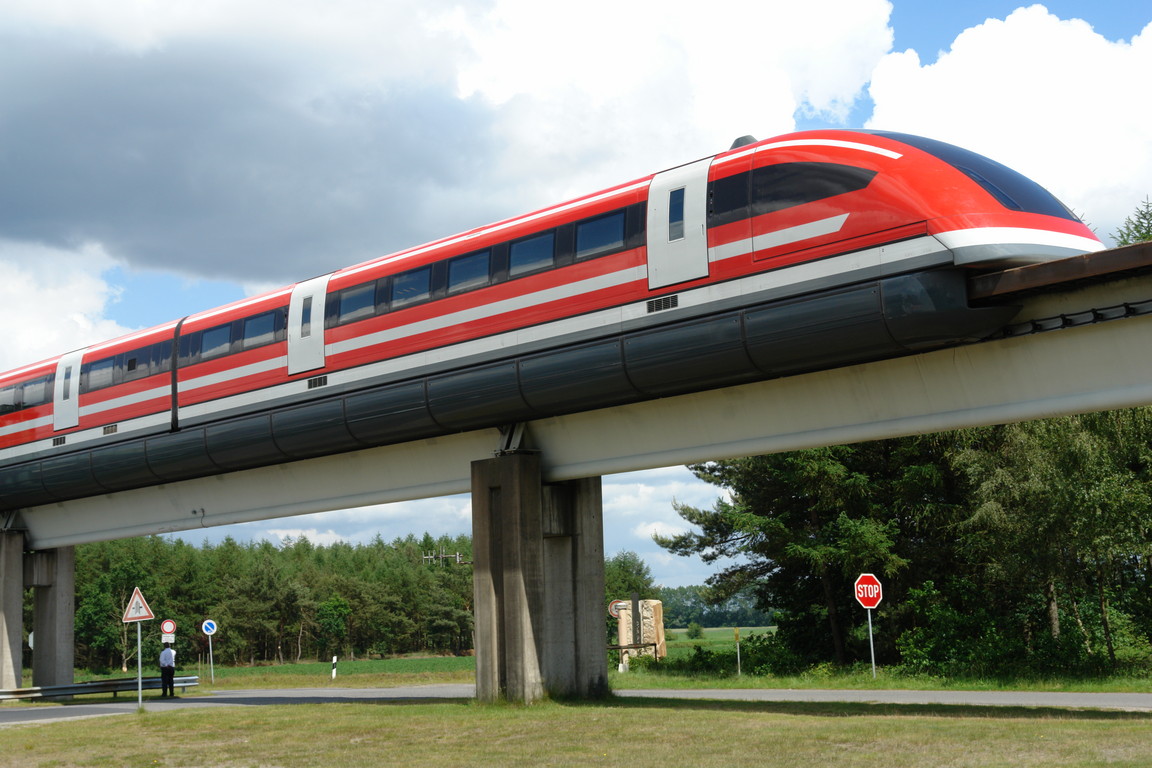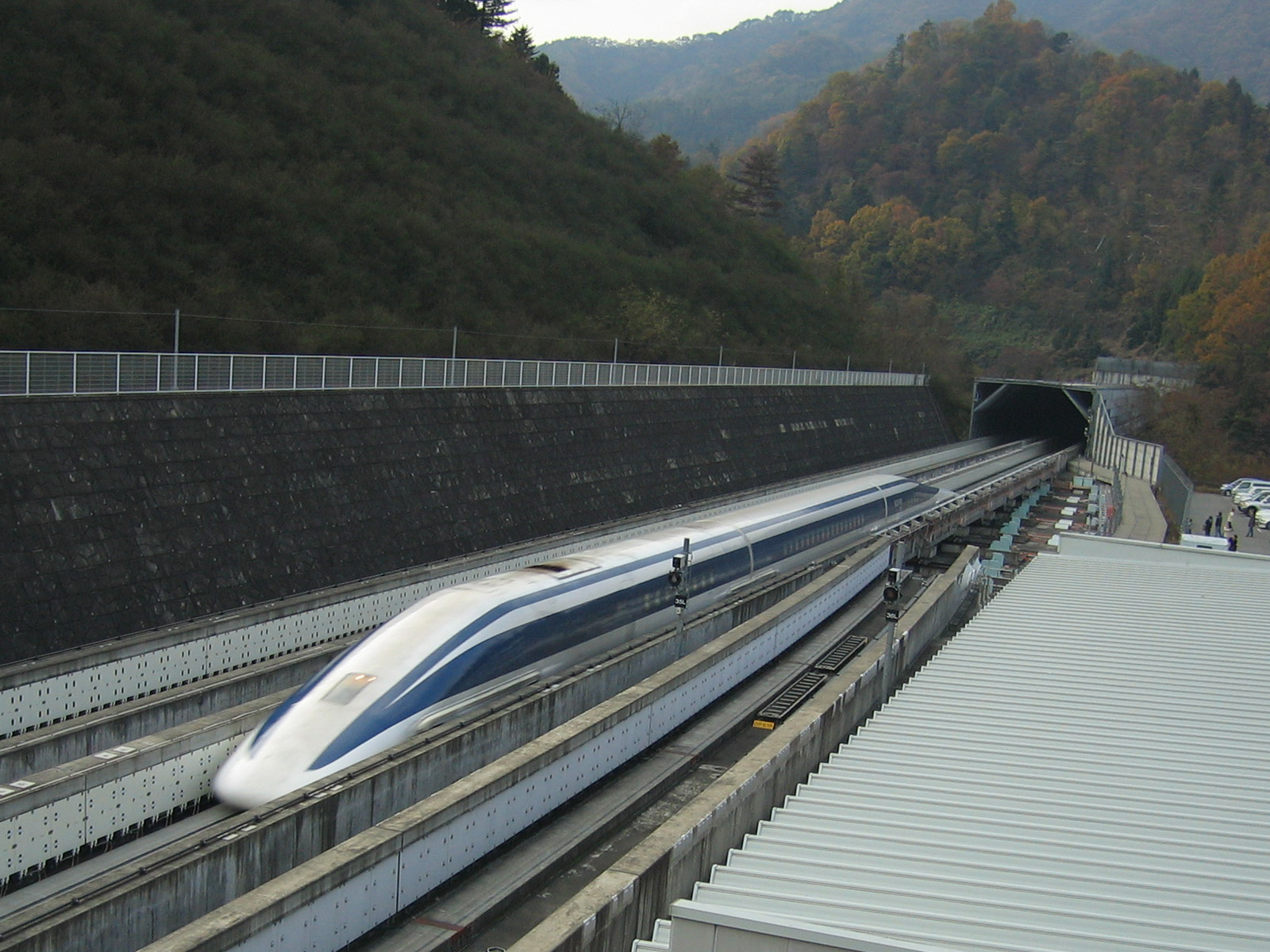Maglev Trains
Maglev is short-form for magnetically levitated train; the fastest type of train in service today. This type of transportation is efficient and cost-effective because there is no contact between the train car and the rails. Maintenance of the rails is not required and there are no power cables required for operation.
Maglevs are based on magnetism and electromagnetism. Maglevs utilize Lorentz forces in linear synchronous motors to propel themselves forwards and suspend themselves between the tracks using the attraction of electromagnets or repulsion by Lenz's law.
Lenz's law:
"An induced current is always in such a direction as to oppose the motion or change causing it."
There are two main technologies in use for magnetically levitating and propelling a train car, which are:
1. Electromagnetic Suspension (EMS)
2. Electrodynamic Suspension (EDS)
Electromagnetic Suspension

The first technology utilizes strong, permanent magnets in the undercarriage and electromagnets in the guide rails. This system uses the force of attraction to magnetically
levitate the train car. As shown in the video, a constant flickering of the on switch for the electromagnet steadies the train car at a short distance from the rails. This is the system that the German Transrapid Maglev uses to stabilize its cars. 
This system is the only one that can support operation at low
speeds. This just means that an EMS system does not require a Maglev to have support wheels during the beginning of operation. The propulsion system however, is separate from the suspension system. EMS is not as stable as EDS because it uses attraction rather than repulsion. Extremely precise feedback systems to control the frequency of turning on and off the switch must be constantly adjusted due to gravity and momentum.
Electrodynamic Suspension

This technology utilizes propulsion and levitation coils along the walls and superconducting electromagnets on the Maglev itself. This system repels the car upward when the train is moving. The propulsion system and levitation system are combined in EDS. Because of this, the EDS system requires a Maglev to have wheels on which it will "taxi" until it reaches approximately 150 km/h, when it will have enough repulsive force to stabilize itself and retract its wheels. The Japanese JR-Maglev uses superconductors to reduce electrical resistance and increase the strength of Lenz forces.
Propulsion

The propulsion mechanism is generally the same in most Maglevs. The track is composed of many units of electromagnets, which an alternating current runs
through as the Maglev passes by that sector of the track. This acts as a linear motor: the electromagnetic field pushes on the back of the train car while it pulls on the front. Because the power source is built into the track, small portions of the track can be turned on as needed as the maglev travels. This is environmentally friendly not only because it uses electricity, which can be generated through hydro or wind turbines, but because it only requires small portions of track to be energized at certain times. The Shanghai Maglev Train (Transrapid EMS System) currently holds the world record for the top operational commercial speed at 431 km/h.
Compatibility, STSE and Future Implementation
Maglevs are not backwards compatible in terms of infrastructure, meaning they cannot be used on regular railroad tracks. High-speed train cars such as the French TGV are noticeably faster than normal passenger trains as it has a specialized rail system, but can be used on conventional railway tracks albeit operated at lower speeds. The Maglev, however, requires completely new infrastructure in order to function; one of the reasons why there are very few passenger Maglevs in operation today.
In the future, commercial Maglev services are proposing the construction of vacuum tubes around existing rails to eliminate air resistance completely, which will hypothetically increase the speed of travel to approximately 3500 kilometers an hour; slightly lower than quadruple the speed of a Boeing 747. This saves time, and thus, money. Also, the use of electricity as the source of energy means that clean energy can be used as an alternative to fossil fuels, and in the case of Maglevs, noise pollution can be reduced.
Practice Q's
Resources:
http://upload.wikimedia.org/wikipedia/commons/0/0f/Transrapid-emsland.jpg
http://upload.wikimedia.org/wikipedia/commons/9/9f/JR-Maglev-MLX01-2.jpg
http://en.wikipedia.org/wiki/JR-Maglev
http://en.wikipedia.org/wiki/Transrapid
http://en.wikipedia.org/wiki/Linear_motor
http://en.wikipedia.org/wiki/Maglev_%28transport%29
http://en.wikipedia.org/wiki/Shanghai_Maglev_Train